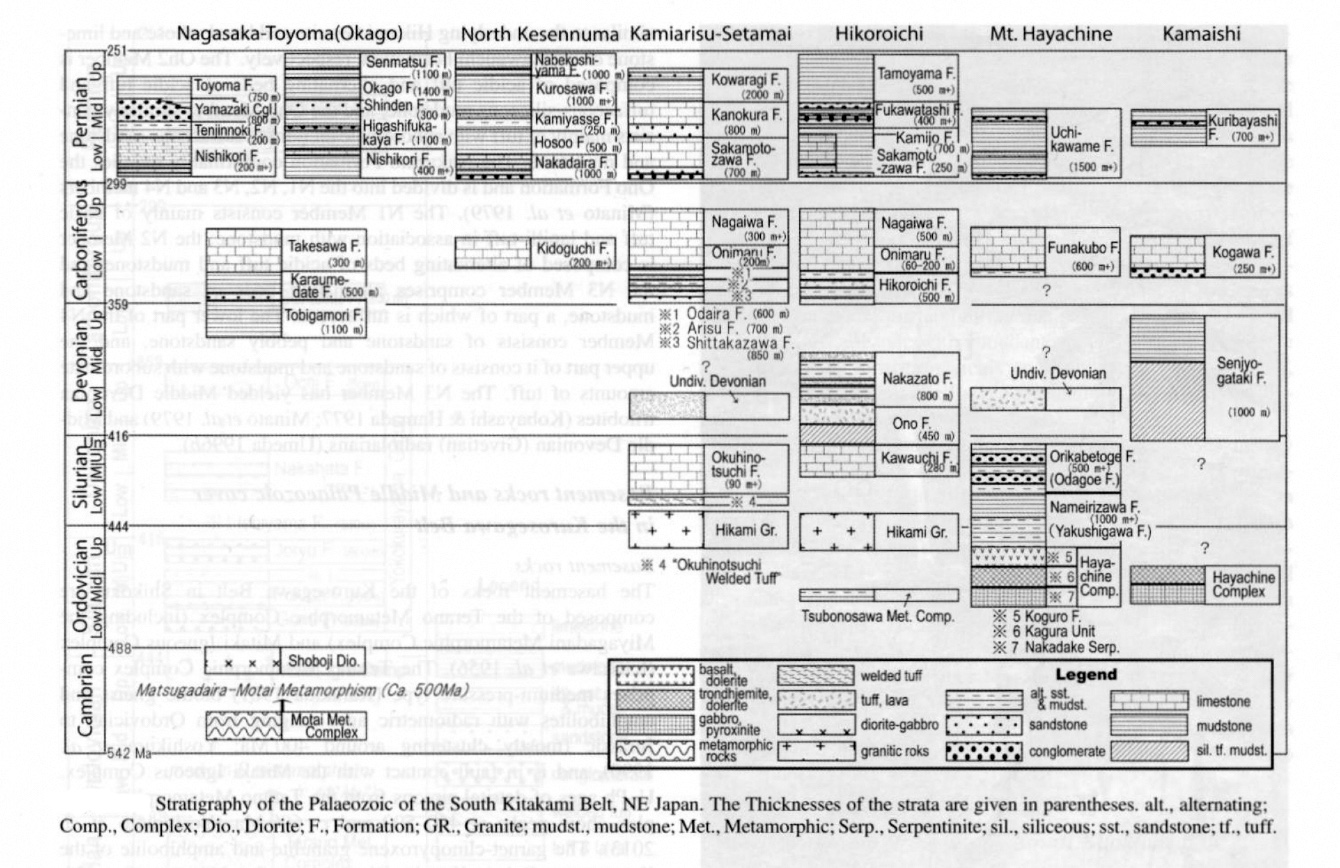Tobigamori Fm
Type Locality and Naming
Nagasaka-Soma district
Synonym:
Lithology and Thickness
consists mainly of mudstone and thin alternating beds of sandstone and mudstone with purple-coloured tuff and tuff breccia interbedded in the middle part.
[Figure 1: Stratigraphy of the Palaeozoic of the South Kitakatmi Belt, NE Japan (after M. Ehiro et al., 2016)]
Relationships and Distribution
Lower contact
Regionally, the schematic strat column indicates the next older unit as Ainosawa Fm
Upper contact
Regionally, the schematic strat column indicates the next younger unit as Karaumedate Fm
Regional extent
Nagasaka-Soma district
GeoJSON
Fossils
Yabe & Noda (1933) reported the Late Devonian (Famennian) brachiopod Spirifer verneuili (Cyrtospirifer tobigamoriensis; Noda & Tachibana 1959) from the Tobigamori Formation, these being the first Devonian fossils discovered in Japan. The middle part of the formation yielded the land plant Leptophloeum rhombicum (Tachibana 1950), whereas in the uppermost part Ehiro & Takaizumi (1992) reported two Late Devonian (and an earliest Carboniferous) ammonoids.
Age
Depositional setting
Additional Information
